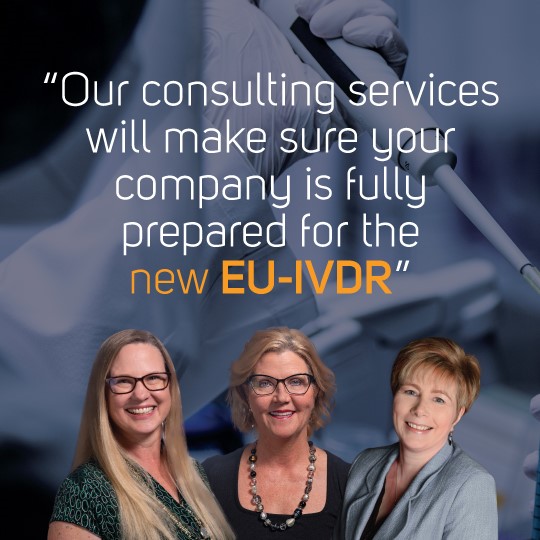EU IVDR
The EU IVDR
The In Vitro Diagnostic Regulation 2017/746 (EU IVDR) is the new regulatory basis (EU) for placing on the market, making available and putting into service in vitro diagnostic medical devices on the European market. The in vitro diagnostic regulation aims to ensure a high level of protection of public health, patients, and users.
It replaced the EU’s Directive on in vitro diagnostic medical devices (98/79/EC) and introduced substantial changes in the sector. The IVD Regulation applies from 26 May 2022. There are transitional agreements to provide more time for conformity assessments to take place; this is required whilst the IVDR infrastructure is being implemented and ensures the availability of in vitro diagnostics on the EU market, but it does not apply to all devices.
There is still an enormous amount of work required to transition from the IVDD to the IVDR, and manufacturers should recognize that the IVDR is more complex and detailed and will, therefore, require more resources to maintain and implement.

Transitional arrangements EU IVDR
The core requirements of the EU IVDR have not changed since it was published, however, amendments have been made which include an extension to the transitional arrangements making additional time available to complete the conformity assessments with Notified Bodies. Class A non-sterile devices do not require a Notified Body, and there is, therefore, no transition for these devices, and the EU IVDR already applies in full.
Read more about the transitional arrangements, which include additional requirements to notify Competent Authorities if devices are to be withdrawn from the EU market.
How to meet the IVDRKey changes of EU IVDR
There are two significant changes between the IVDD and the EU IVDR. Firstly the implementation of a classification based on, but not identical to, the IMDRF classification. This introduces a risk-based classification A to D, with D being the high-risk devices. The second significant change is the introduction of increased Notified Body oversight for class B, C, and D devices plus class A sterile. These devices now need an audit of the quality management system (QMS) and a review of the technical file.
The EU IVDR is very prescriptive, and as a result, the transition will require significant effort and attention to detail. Qserve's practical approach helps to guide you through the complete implementation process and find the most efficient way to meet the new requirements. Our consultants will support your implementation by sharing their hands-on experience.
Key changes IVDD vs IVDR
Interested in our EU IVDR services?
Qserve is here to support you on this journey, using our expertise to understand the requirements. Our staff is intimately involved with the development of the new IVDR Regulations and can share this inside knowledge to help create submissions in a Notified Body-friendly format and can guide you through the implementation process from concept to market access.
IVDR services
On-Demand Free Webinar EU-IVDR
Learn to understand and effectively use the IVDR transition for successful CE marking. In this webinar: EU-IVDR two years on, Sue Spencer explained (May 28, 2024) the meaning of the extension to the transition of the IVDR and how manufacturers can adjust and utilize their strategy to manage the transition time efficiently.
This webinar aims to help by sharing the following:
- The current state of play
- What is the extension to transitional arrangements and timelines
- How will this impact the conformity assessment process?
- Revising your strategy
- Opportunity and threats
- How to benefit from the additional time
Join our On-Demand recording.
More information
“The IVDR is an enormous change to the IVD industry, many are calling it a cultural shift. Not only does it requires a significant change to technical documentation and the quality management system, but it includes a new requirement for economic operators which changes their responsibilities and also the relationship the manufacturer currently has with them.“
Sue Spencer | Head of IVD & Principal Consultant
Contact us
